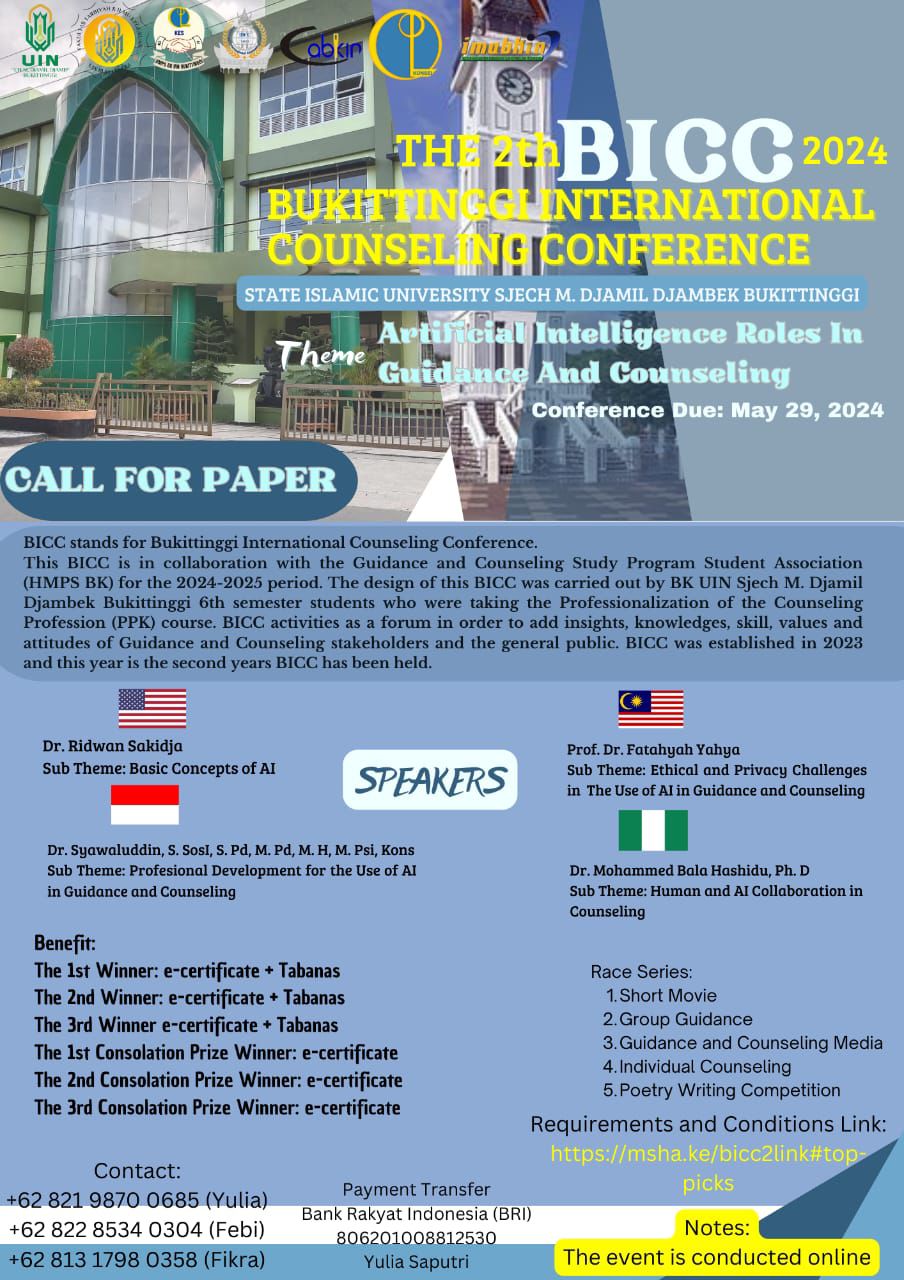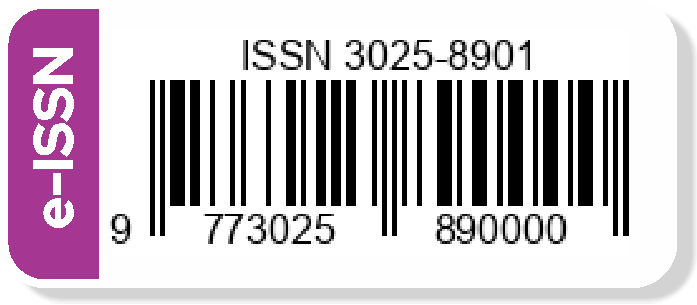Utilization of AI to Support the Diagnosis of Emotional Disorders in Counseling
DOI:
https://doi.org/10.30983/bicc.v1i1.116Keywords:
AI, Emotional Disprder, CounselingAbstract
In accordance with the development of the times, of course, in order to make good use of guidance and counseling, you can use AI (Artifical Intelligence) to help in solving problems owned by clients. One of the problems mentioned is about emotional disorders that have recently been experienced by many individuals. Emotional disturbances are a serious problem in a person's development. In the United States, parents of 1,500,000 children and adolescents have children who have emotional problems. In 2003 in a survey of the Indonesian Mental Health Federation (FeKMI) there were results in 10 major cities in Indonesia, namely Medan, Jakarta, Bandung, Padang. Surabaya, Semarang, Yogyakarta, Ujung Pandang, Banjarmasin and Denpasar showed that 54% of teenagers had fought, 87% lied, 28% thought violence was normal and 8.9% had tried drugs. The purpose of this study is how effective the use of AI to support the diagnosis of emotional disorders in counseling. This research was conducted with a qualitative approach with a type of literature study, namely a method with data collection by understanding and studying theories from various literature related to the research. This approach was chosen because it provides a more in-depth explanation of how to use AI to support the diagnosis of a person's emotional disorder in counseling by understanding, and studying theories both from books, journals and existing research. Based on literature studies, it can be understood that the use of AI to support the diagnosis of emotional disorders in counseling is not entirely effective in the use of AI such as applications and websitw in diagnosing emotional disoders and conducting counseling because counseling services still require professional counselors in directing dients and assisting dients in solving problems
References
Adlini, M. N., Dinda, A. H., Yulinda, S., Chotimah, O., & Merliyana, S. J. (2022). Metode penelitian kualitatif studi pustaka. Edumaspul: Jurnal Pendidikan, 6(1), 974–980.
Aquarisnawati, P. (2005). Deteksi Gangguan Emosi Pada Anak Autisma Melalui Bender Gestalt. Skripsi.
Eriana, E. S., & Zein, A. (2023). Artificial Intelligence (AI).
Goleman, D. (2000). Emotional Intelligence, Jakarta: PT. Gramedia Pustaka Umum.
Indah, S. (n.d.). BUKU AJAR KECERDASAN BUATAN (ARTIFICIAL INTELLIGENCE).
Juliani, I. R., & Wulandari, I. S. M. (2022). Hubungan Tingkat Kecanduan Gadget Dengan Gangguan Emosi Dan Perilaku Remaja Kelas 8. Jurnal Keperawatan BSI, 10(1), 30–40.
Riskiani, D. (2023). SISTEM PAKAR DIAGNOSA DINI MENTAL HEALTH MENGGUNAKAN METODE CERTAINTY FACTOR BERBASIS WEB. Jurnal Informatika Multi, 1(6), 594–600.
Utami, F. N., Satoto, K. I., & Martono, K. T. (2016). Rancang Bangun Aplikasi Sistem Pakar Diagnosis Gangguan Emosional Pada Anak Berbasis Aplikasi Website. Jurnal Teknologi Dan Sistem Komputer, 4(1), 109–123.
Walgito, B. (2004). Bimbingan dan konseling di sekolah. Yogyakarta: Andi, 5.
Winkel, W. S. (2021). Bimbingan dan konseling di institusi pendidikan.
Downloads
Published
How to Cite
Issue
Section
License
Copyright (c) 2024 Wanda Raihana Fadila, Shindi Erka Fitri, Meisya Puri Azzahra, Sabarrudin

This work is licensed under a Creative Commons Attribution-ShareAlike 4.0 International License.












